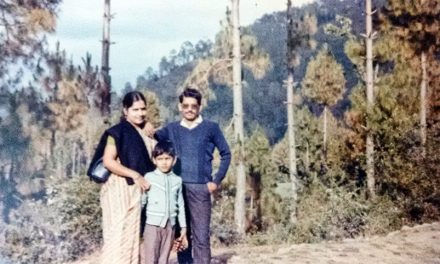Surina Devi, a matronly 70-year-old in a brown crepe sari, had a so-so life, she says, until her shopkeeper husband died four years ago. For reasons she is unable or loath to explain, the former housewife from a rural village near Patna, in Bihar, was left with “nothing, nothing.”
So Ms. Devi did what poor Indian widows have been doing for centuries: She packed a bag and made her way to Vrindavan, a holy town in northern India that is also known as the City of Widows. After a night sleeping on the pavement, she found a bed in an crowded ashram – a house of prayer – for widows, where she says she will spend the rest of her life.
But it’s not much of a life. And this town where 16,000 women dress in white – the colour of death – is growing, according to a new report. The survey, published last month by the United Nations Development Fund for Women and the Delhi-based Guild of Service, an Indian charity for widows, illuminates the harsh realities for Vrindavan’s widows.
It reveals that 40 percent of women here were married before the age of 12. A third were so impoverished that they traveled to Vrindavan without a train ticket. But perhaps the more startling fact is that despite India’s economic ascension and its increasing exposure to global cultural forces, the report offers anecdotal evidence that the number of widows flocking to the town is on the rise.
Nearly a millennium after the Skanda Purana, a Hindu text, described widows as “more inauspicious than all other inauspicious things,” many husbandless women in India still live as impoverished pariahs, shunned by their families and society when their husbands die. According to the report’s author, it is poverty and a lack of independence, not spiritual devotion, that has turned the City of Widows into a kind of boomtown.
In many cases, the pressures of modern Indian life have exacerbated the brutality of tradition, as an increasing number of Indian children refuse to care for their parents, male or female, says Mittal Patel, manager of a government-funded ashram in Vrindavan. “Children are less supportive than they used to be,” says Ms. Patel. If this is so, few of the mothers now living in Vrindavan will admit it.
“Only yesterday, my son telephoned and said he is coming to fetch me,” says Chavi Das, a tiny, elderly woman in a canary-yellow sari, as she squats on the courtyard veranda of the Aamir Bari ashram with a dozen other elderly women. Rukmani, who goes by one name and is “60 or 70,” shakes her head vigorously when she says she has no children. But a moment later, she mumbles bitterly that she is a “hot-headed woman” and it is her fault that things went wrong with her daughter-in-law.
Widows have come to Vrindavan since the 16th century, hoping that Sri Krsna will grant them moksha, or freedom, from the cycle of birth and rebirth. But more than that, they hope that the material benefits of Vrindavan, with its 5,000 temples and numerous alms-giving ashrams, will allow them to survive a little longer in this life.
As poor as she is, Rukmani is comparatively well off. At Aamir Bari, the 110 residents are encouraged to wear the brightly colored saris of their former lives. They watch television, cook, and gossip. More important, Aamir Bari is the only ashram in Vrindavan that provides three meals a day. Elsewhere, widows must earn their bread by singing in temples.
Bhagwan Bhajan Ashram
At 3 pm in the centre of town, more than 1,000 women in grubby white saris shuffle into the dimly lit hall of a temple for the second of two lengthy hymn-singing shifts. First they queue up to receive a small plastic token from the temple. Then they sit in rows on the floor, facing a shrine to Krishna and Radha, his beautiful lover. Several women are lying down. One, with trembling hands, unfolds a sheet of waterproof plastic and carefully arranges it beneath her.
And then the singing begins: 3-1/2 hours of “Hare Rama, Hare Krishna” to the roll of drums and clashing of cymbals. After the song, the women slowly rise and line up again, this time exchanging each coupon for three rupees (about 7 cents) from the temple’s cashier. “It’s a kind of torture, sitting there for hours,” says Maduri Devi, a feisty white-haired resident at the government-funded Meera Sahbhagini Mahila ashram, where she sits on a charpoy, girlishly swinging her legs. Though Ms. Devi and her 300-plus fellow residents are given a daily food ration, it is not enough to live on, says the widow of a homeopathic doctor from Patna in Bihar. “I have lived a much better life than this,” she says proudly. “But many of the women here are poorer than me and for them, I don’t think this life is so bad.” [Christian Science Monitor].











